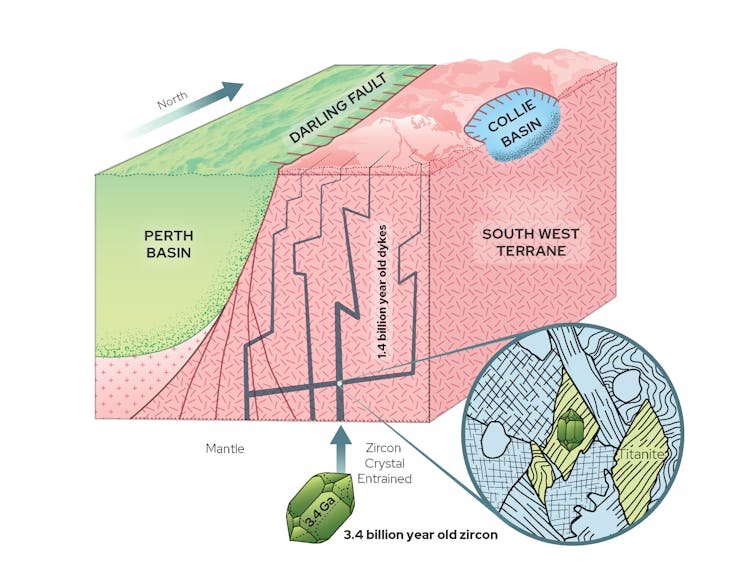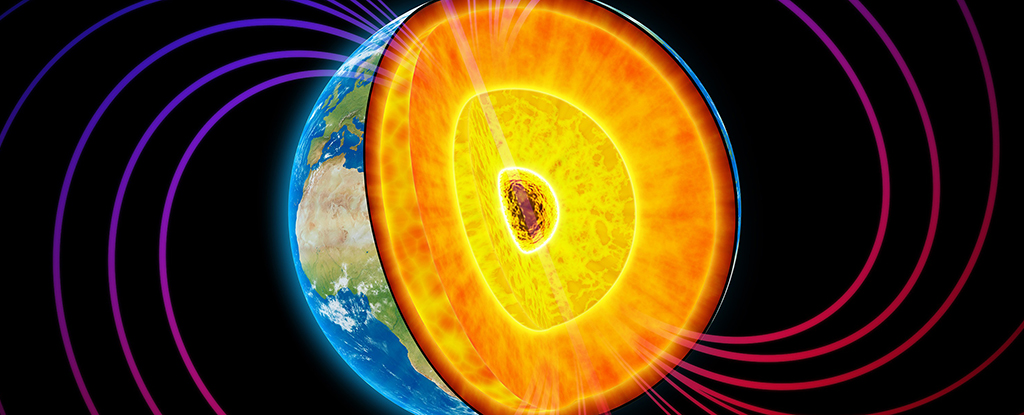Our planet was born about 4.5 billion years ago. To understand this mind-bogglingly long history, we need to study rocks and the minerals that make them up. Australia’s oldest rocks, which are among the oldest in the world, are located in the Murchison region of Western Australia, 700 kilometers north of Perth. They have been established for almost 4 billion years.
New research has found evidence of rocks of the same age near Collie, south of Perth. This suggests that ancient rocks in Western Australia cover a much larger area than we know and are buried deep in the earth’s crust.
ancient continental crust
Australia’s ancient crust is crucial to understanding early Earth because it tells us how continental crust formed and developed. The continental crust forms the basis of the land where humans live, supporting ecosystems and providing the resources necessary for civilization. Without it, there would be no fresh water. Being rich in mineral resources such as gold and iron makes it economically important.
But studying ancient continental crust is not easy. Many are deeply buried or have been greatly altered by the environment. There are only a few open areas where researchers can directly observe this ancient shell.
To understand the age and composition of this hidden ancient crust, scientists often rely on indirect methods such as examining eroded minerals preserved in overlying basins or using remote sensing of sound waves, magnetism or gravity. But there may be another way to peer into the deep crust and even sample it by chance.
Pulling crystals from the depths
Our planet’s crust is often incised by fingers of dark magma, rich in iron and magnesium, that extend from the top of the crust to the Earth’s mantle.
These structures, known as dykes, can emerge from depths of at least 50 kilometers (much deeper than even the deepest borehole, which extends only 12 kilometers). These dykes can pick up small amounts of minerals from the depths and transport them to the surface where we can examine them.
In a recent study, we found evidence of ancient buried rocks by dating zircon grains from one of these sets.
Zircon contains small amounts of uranium, which eventually turns into lead. By precisely measuring the ratio of lead to uranium in zircon grains, we can determine how long ago the grain crystallized. This method showed that the zircon crystals in the set were 3.44 billion years old.
titanite armor
The zircons are encapsulated in another mineral called titanite, which is more chemically stable than the zircon in the channel. Think of a grain of salt in boiled sugar, soaked in a cup of hot tea.
The durability of titanite armor protected the ancient zircon crystals against changes in chemicals, pressure and temperature as the dike moved upward. The unprotected zircon crystals in the dyke were greatly altered during the voyage, and their isotope records were erased. However, grains embedded in the titanite remained intact, providing a rare glimpse into Earth’s early history.
The levee, itself approximately 1.4 billion years old, offered a unique window into an otherwise hidden ancient crust. We have also found similar ancient zircon grains in the sands of the Swan River, which flows through Perth and originates in the same area; This further confirms the age and origin of these ancient materials.

The results expand the known area of the ancient shell previously recognized in the Narrier area of Murchison County. One of the reasons why it is important to understand the deep crust is that we often find metals at the boundaries between blocks of that crust. Mapping these blocks can help identify areas to explore for mining potential.
The next time you pick up a stone and get some mineral grains on your hand, think about how long those grains can exist. To understand the timeline, imagine that the history of our planet lasts one year. The world was formed from swirling dust 12 months ago. Any handful of sand you collect around Perth will contain one or two ten-month-old grains. Most of the gold in Australia was formed seven months ago, and land plants appeared only a month ago.
Dinosaurs appeared two weeks ago. All humanity came in the last 30 minutes. And you? Seriously, on this scale your life will last about half a second.
Source: Port Altele
